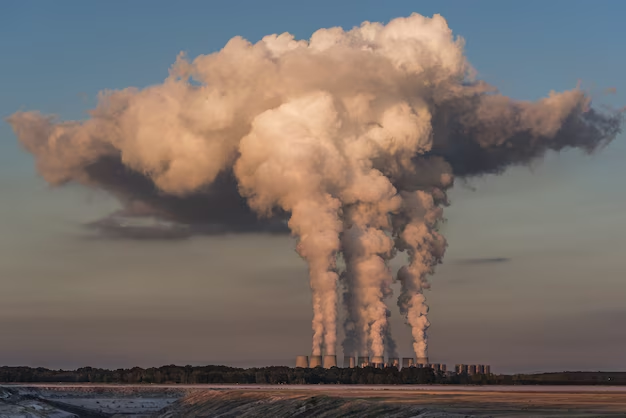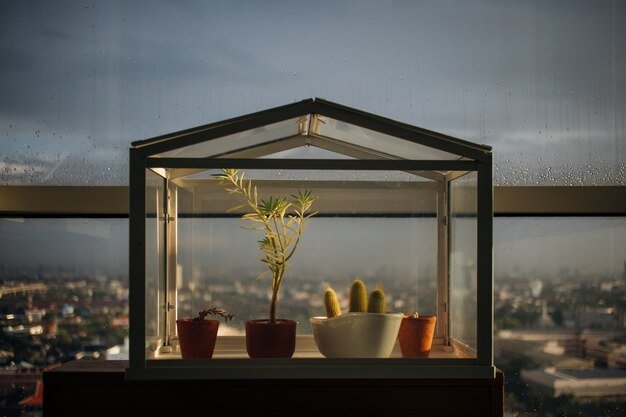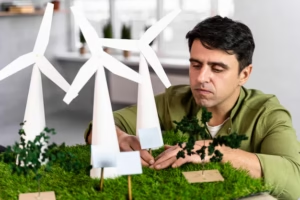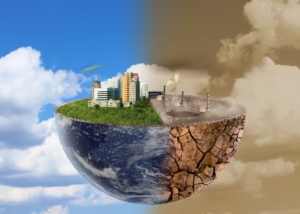How Greenhouse Gasses in the Atmosphere climate
Greenhouse gasses (GHGs) are gasses climate found in the Earth’s climate change that trap warm. The most common Greenhouse gasses are carbon dioxide (CO2) methane (CH4) and nitrous oxide (N2O). These gasses certificate daylight to enter the air. They too avoid a few of the warm from getting away back into space. This catching of warm makes a difference keep the Soil warm sufficient to back life. Understanding how nursery gasses influence our climate is exceptionally critical. They play a characteristic part in keeping up the Earth’s temperature.
Human activities, like burning fossil fuels and deforestation, have increased Greenhouse Gasses levels, which trap heat and contribute to global warming. While greenhouse gases are essential for maintaining a livable temperature on Earth, excessive amounts can lead to harmful effects, such as climate change. Understanding the role of greenhouse gases is crucial for taking action to protect the planet.
Our planet would be much colder and not appropriate for most life. Be that as it may, human exercises such as burning fossil powers like coal oil and gas. As well as cutting down woodlands have caused the levels of nursery gasses to increment. This additional warm being caught by these Greenhouse Gasses is causing the Soil to warm up as well quickly. Did you know that without nursery gasses Soil would be as well cold to live on? Whereas these gasses are basic for life as well much of them can lead to perilous results such as climate change. It’s imperative to get it how Greenhouse Gasses work and how they affect the climate so we can take activity to secure the planet.
What Are Greenhouse Gases?
Greenhouse gases (GHGs) such as carbon dioxide (CO2), methane (CH4), and nitrous oxide (N2O) trap heat in the Earth’s atmosphere, helping to maintain a temperature suitable for life. Greenhouse Gasses originate from various sources, notably the burning of fossil fuels, which releases CO2, and agriculture, particularly methane emissions from livestock. Deforestation exacerbates the problem by reducing the number of trees that can absorb CO2. While GHGs are essential for regulating the Earth’s temperature, excessive levels can lead to global warming and climate change.

Greenhouse gasses (GHGs) are gasses in the Earth’s climate that trap warm. The primary nursery gasses are carbon dioxide (CO2) methane (CH4) and nitrous oxide (N2O). Greenhouse Gasses let daylight into the Soil but too trap a few of the warm that bounces off the Earth’s surface. This handle keeps the Soil warm sufficient to back life. Nursery gasses come from diverse sources. An enormous one is burning fossil fills like coal oil and gas. When we burn these fills for vitality it discharges CO2 into the discuss. Farming moreover discharges nursery gasses particularly methane from creatures like bovines. Deforestation or cutting down trees makes the issue more regrettable since there are less trees to retain CO2. Greenhouse Gasses are critical for keeping the Soil at the right temperature. They trap warm and offer assistance keep the planet warm sufficient for life. But as well many Greenhouse Gasses can make the Soil as well hot. Which causes worldwide warming and climate change.
The Greenhouse Effect
How the Greenhouse Impact Works
The nursery impact is the prepare that makes a difference keep the Soil warm sufficient for life. It happens when warm from the Soil is caught in the environment. Without this impact, the Soil would be as well cold to bolster life as we know it. Here’s how it works:
Sunlight Enters the Earth’s Atmosphere
First, daylight enters the Earth’s climate. Daylight is made up of vitality that warms the Earth’s surface counting the arrive seas and discuss. Most of this vitality is retained by the Earth’s surface warming it up. After the surface gets warmed. A few of this warm is discharged back into the climate as infrared radiation. In any case, not all of it get away back into space.
Greenhouse Gasses Trap Heat

Greenhouse gases (GHGs) like carbon dioxide, methane, and water vapor trap heat in the atmosphere, creating a insulating layer that allows sunlight in while preventing some warmth from escaping, thus maintaining a habitable temperature on Earth. However, an excess of Greenhouse Gasses, particularly CO2, can lead to excessive warming and contribute to global warming. The nursery gasses (GHGs) in the climate, such as carbon dioxide (CO2), methane (CH4), and water vapor (H2O) trap a few of this warm. These gasses act like a thick cover or cover around the Soil. They permit daylight to come through, but they avoid a few of the warm from getting away. This caught warm keeps the Soil hotter than it would be without these gases. In a way, nursery gasses make Earth’s air work like a cover that makes a difference keep up a comfortable temperature for life to flourish. In any case, this prepare as it were works when there is a adjust of nursery gasses. As well numerous gasses in the air like CO2, can lead to intemperate warm, which is a key cause of worldwide warming.
Comparison to a Nursery or a Car
To get it the nursery impact superior, envision a nursery for plants. A nursery is made of glass, which lets daylight in. Once interior, the daylight warms up the discuss and the plants. The glass traps the warm, avoiding it from getting away. This keeps the plants warm indeed when it’s cold outside. Another great case is a car cleared out in the sun. The daylight passes through the car’s windows, but the warm gets caught interior. This makes the interior of the car much sultrier than the exterior temperature.
Why It Matters
The nursery impact is vital since it makes a difference control the Earth’s temperature. Without it, the Soil would be as well cold for life. But, when as well numerous nursery gasses are discharged into the air, they trap as well much warm. Causing the Soil to warm up as well quickly. This can lead to climate change. Which brings around genuine issues like rising ocean levels extraordinary climate occasions and misfortune of ecosystems.
The Part of Carbon Dioxide (CO2)

Carbon dioxide (CO2) is one of the most imperative nursery gasses. It traps warm in the Earth’s air making a difference to keep the planet warm sufficient to back life. In any case, when there is as well much CO2 in the discus. It causes the Soil to warm up as well much driving to worldwide warming. Human exercises like burning fossil powers and deforestation are the fundamental reasons CO2 levels are rising. When we burn coal, oil, and characteristic gas for vitality transportation and industry. It discharges huge sums of CO2 into the climate.
Moreover, deforestation includes to the issue. Trees normally retain CO2, but when woodlands are cut down or burned. The CO2 that was put away in the trees is discharged back into the discuss. This increments the sum of CO2 in the climate indeed assist. Overabundance CO2 contributes to worldwide warming by catching warmer, driving to higher temperatures. This causes dissolving ice caps increasing ocean levels more extraordinary climate occasions and harm to seas. To moderate down worldwide warming. It is critical to decrease CO2 outflows by using cleaner vitality securing timberlands and receiving more economical practices.
Other Nursery Gases
Besides carbon dioxide (CO2), there are other nursery gasses that moreover trap warm. One of these is methane (CH4). Methane is exceptionally great at catching warm indeed in spite of the fact that it’s in littler sums than CO2. It comes from animals, landfills fossil fuel generation and the rot of natural matter. In spite of the fact that its less common, methane has a much more grounded warming impact in the brief term. Another nursery gas is nitrous oxide (N2O). This gas is generally discharged from farming and the use of fertilizers. Nitrous oxide too traps warm exceptionally effectively in spite of the fact that it is found in littler sums than CO2.
Which makes it a long-term calculate in warming. There are to follow gasses like ozone (O3) and water vapor (H2O). These gasses are less imperative than CO2 methane and nitrous oxide but they still contribute to the nursery impact. Water vapor is the most common nursery gas but its levels depend on the temperature which is influenced by gasses like CO2. Together. All these gasses trap warm in the air causing worldwide warming and climate change. Lessening their emanations is imperative for abating down the warming of our planet.
The Effect of Nursery Gasses on the Climate
Greenhouse gasses trap warm in the Earth’s environment causing worldwide warming. As the Soil warms up. It changes the climate in many ways. One impact is on climate designs. With higher temperatures. We see more extraordinary climate. This incorporates heatwaves solid storms surges and dry spells. Sultrier discuss can hold more water driving to overwhelming rain and surges. Whereas dry ranges confront longer dry spells. Ocean levels are moreover rising. As the planet warms, icy masses and ice caps soften including more water to the seas. The water too grows as it warms up, causing ocean levels to increase.
Ecosystems are influenced as well. Creatures and plants may battle to survive in the hotter temperatures. A few species may go terminated and others strength require to move to modern places. This disturbs the adjust of biological systems and nourishment chains. All of these changes are portion of the climate emergency. The more nursery gasses we discharge. The more awful these impacts will ended up. We require to act presently to diminish emanations and moderate down the harm to our planet.
Conclusion
greenhouse gasses trap warm in the Earth’s climate, causing the planet to warm. This leads to changes in climate increasing ocean levels and disturbances to environments. The more nursery gasses we discharge. The more regrettable the impacts will be. So, what can we do to offer assistance the planet? We can diminish our carbon impression by using cleaner vitality, driving less and securing woodlands. We can moreover back arrangements and businesses that work to decrease outflows and take activity on climate change. Will we act presently to ensure the Soil or let it proceed to warm? The future of our planet depends on the choices we make nowadays.
Share this content:













1 comment